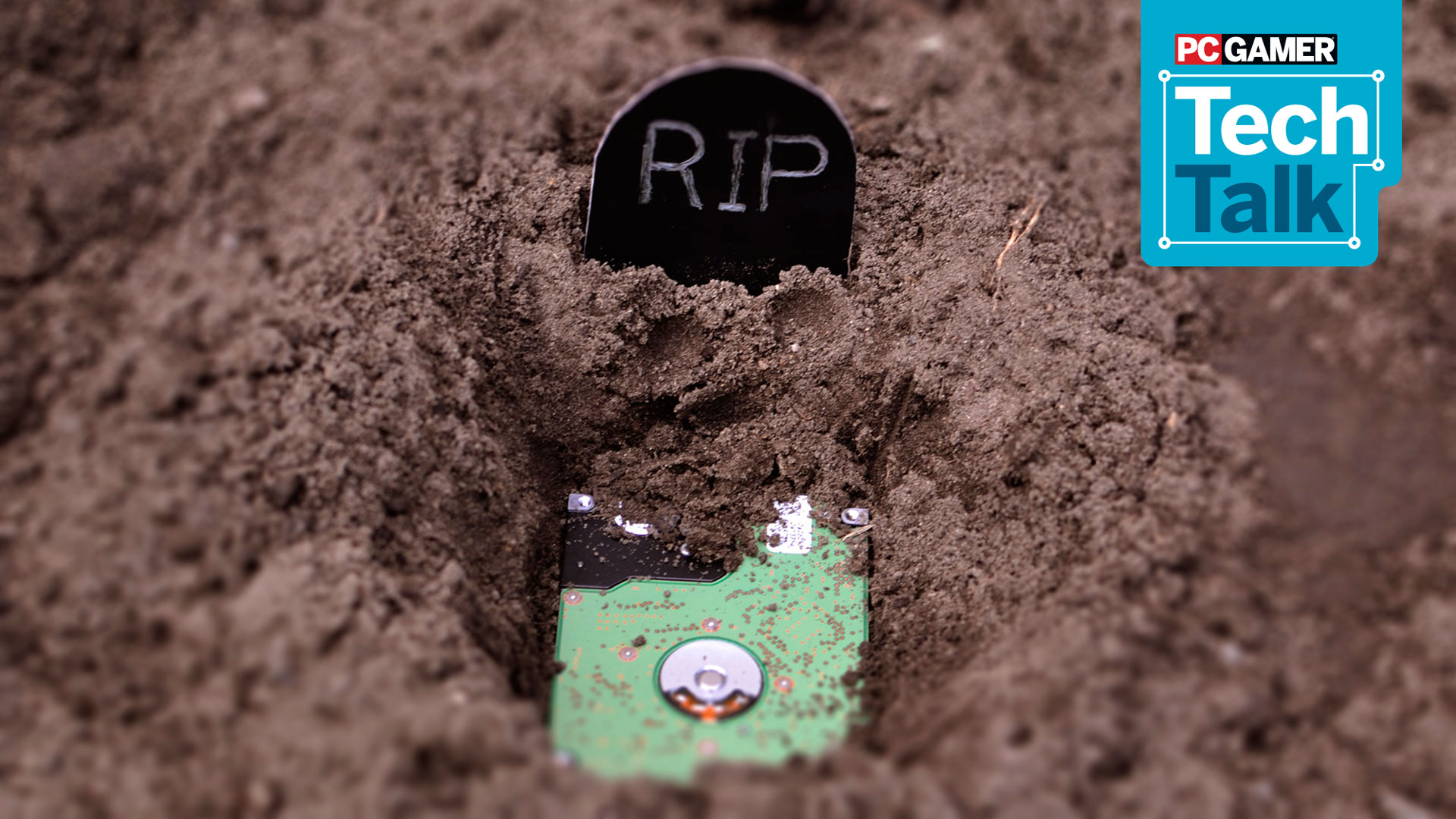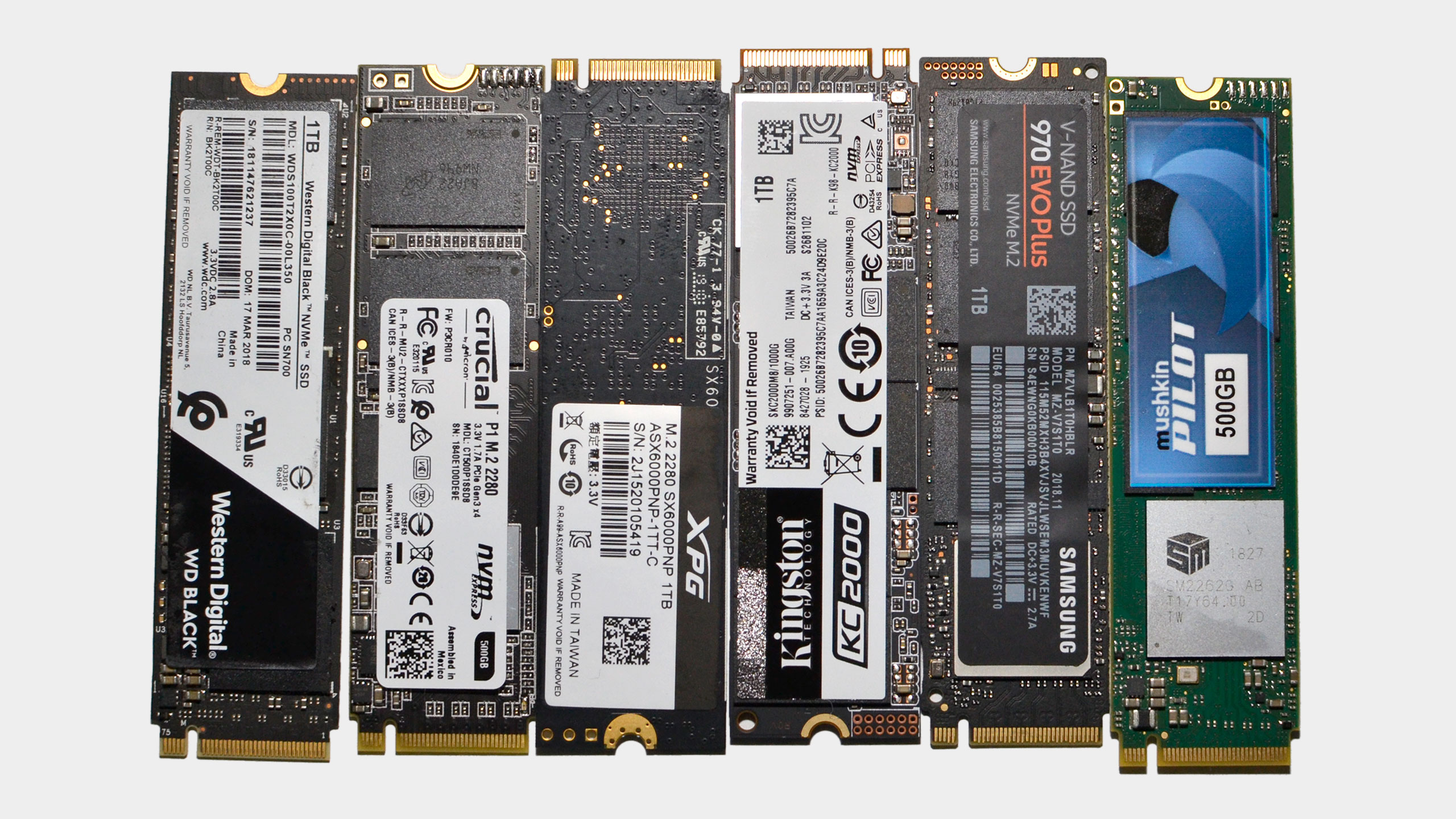The HDD is dead to me
Falling prices mean even large SSDs are now affordable.

I've been using PCs since the original 8088 and 8086, and progress in processors and graphics over the decades has been phenomenal. Meanwhile, storage by comparison was limping along for most of the time, and it wasn't until SSDs started showing up in the late aughts that storage became exciting. The best SSDs can radically change the everyday feel of using a PC, and if you're still wondering about the merits of HDD vs. SSD, it's time to put that debate to rest. Hard drives may be cheaper, but as far as I'm concerned, HDD tech is dead.
The first time I used an Intel X25-M 80GB SSD, I was blown away. Windows, browsers, and other applications seemed to launch almost instantly, and it was awesome. What wasn't quite so awesome was the price. $595 for 80GB was more than steep—it put the SSD out of reach for many users. Over the coming years, prices fell and capacities increased, but there have still been naysayers.
"Sure, you can get a 128GB SSD for $200 … or you can get a 2TB hard drive for the same price". That was said by many people back in 2011, where SSDs were at least an order of magnitude more expensive than hard drives. More recently, in 2016 NAND shortages caused a spike in SSD prices and we went from 500GB models selling for $100 back to $200 or more.
Thankfully, those shortages are now well and truly behind us, and you can find quite a few 1TB SSDs for less than $100 these days. And with advancements like QLC, it's not just SATA SSDs—Intel's 660p 1TB and Crucial's P1 1TB top the list in terms of value, at 10 cents or less per GB, and faster NVMe SSDs aren't far behind. (Actually, a few M.2 drives are now cheaper than SATA drives!)
Sure, you can still make the case that HDDs cost less. 4TB hard drives start at around 2 cents per GB. The thing is, while games continue to increase in size, I don't really need several terabytes of storage. 1TB may not be enough for all of my favorite games, apps, and benchmarking tools, but 2TB certainly is—and the Intel 660p 2TB is actually the lowest priced 2TB class SSD at just 9 cents per GB. It originally launched at a recommended price of $399 about a year ago, and it now sells for less than half that amount. That's the kind of progress I like to see!
Keep in mind that not all SSDs are created equal. If you run a bunch of write-heavy workloads, particularly random access writes, the QLC drives can struggle a bit. Outside of benchmarks, however, the most storage intensive task I'm likely to do is installing a new game—which is mostly a sequential access workload. That means throughput of 1,500MB/s or more for M.2 drives, compared to a maximum speed of 550MB/s for SATA. But whether it's a SATA or M.2 drive, for general home and consumer use, even a "slow" SSD is plenty fast. More importantly, because there are no moving parts, access speeds are often several orders of magnitude faster than a hard drive—microseconds compared to milliseconds.

Hard drives continue to slowly increase in capacity, but with the advent of SSDs, manufacturers have basically abandoned higher RPM models, leaving 5,400 and 7,200 rpm as the two main options. With a 7,200 rpm spinning platter, that means about 4.2 ms on average for the right sector to pass under the drive heads, and usually another 8 ms to get the heads over the right track. 12 ms total might not seem like much, but for pseudo-random access workloads (like booting Windows), there can be thousands of such accesses. Contrast that with access times of anywhere from 10-150 μs (depending on the SSD) and it's easy to see why solid state storage handily eclipses spinning disks.
Keep up to date with the most important stories and the best deals, as picked by the PC Gamer team.
As far as longevity goes, there's nothing to worry about on the larger modern SSDs. The 1TB Intel 660p and Crucial P1 drives are rated for 200 TBW (TB written), spread out over five years. That's about 110 GB per day, if you're wondering—and the 2TB 660p doubles that to 219 GB per day. For consumer use, even 20 GB writes per day on average would be a lot, and it would take 27 years to burn out the NAND cells. 27 years ago, a state-of-the-art PC would have used a 486 processor, with perhaps 16-32MB of memory and a 250-500MB hard drive. I wouldn't even want to try guessing at what sort of hardware we'll be using two decades from now.
I'm not saying everyone has to fully abandon the venerable HDD now. They're great for backups, for example—I've got a 4TB model that I use for archiving old files and other data, and the past decade or so of documents, movies, and pictures still only uses about half of its capacity. But I know people with NAS setups that hold 100TB or more of movies, and HDDs are perfectly fine there. Still, my 4TB HDD is probably the last one I'll buy. As SSD prices continue to drop and performance and capacity continue to increase, HDDs are going the way of the floppy disk.
The HDD is dead. Long live the SSD. At least until something even better comes along.
Jarred's love of computers dates back to the dark ages when his dad brought home a DOS 2.3 PC and he left his C-64 behind. He eventually built his first custom PC in 1990 with a 286 12MHz, only to discover it was already woefully outdated when Wing Commander was released a few months later. He holds a BS in Computer Science from Brigham Young University and has been working as a tech journalist since 2004, writing for AnandTech, Maximum PC, and PC Gamer. From the first S3 Virge '3D decelerators' to today's GPUs, Jarred keeps up with all the latest graphics trends and is the one to ask about game performance.


